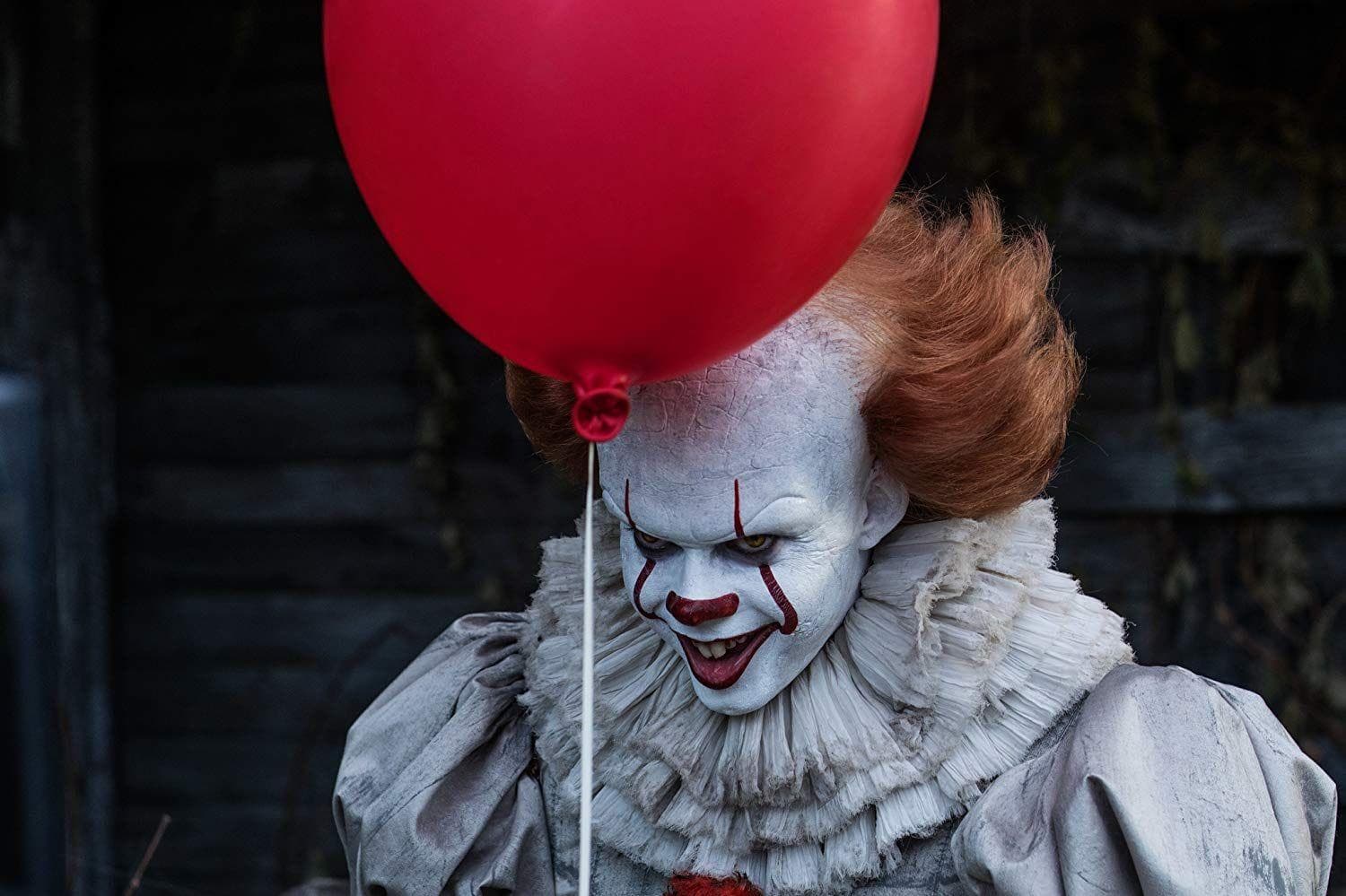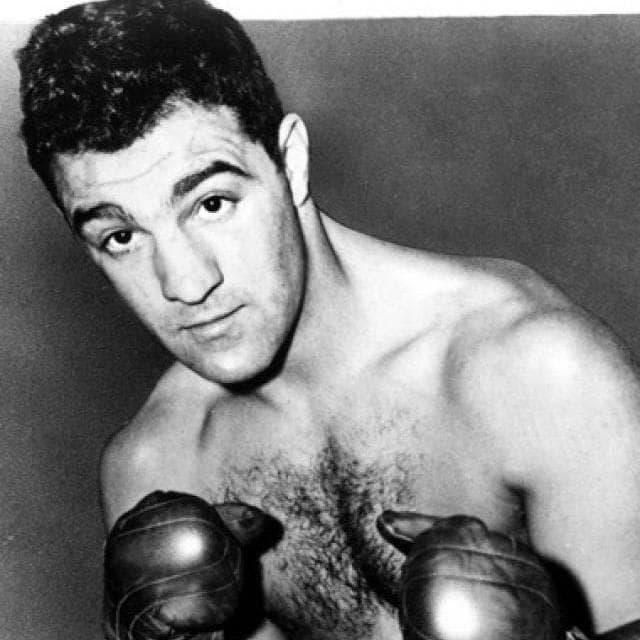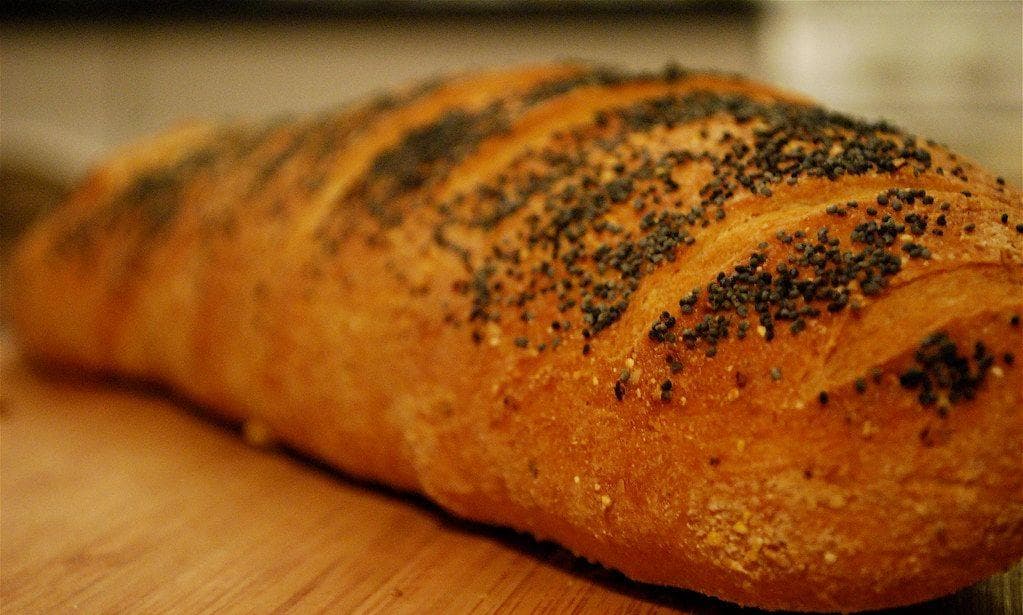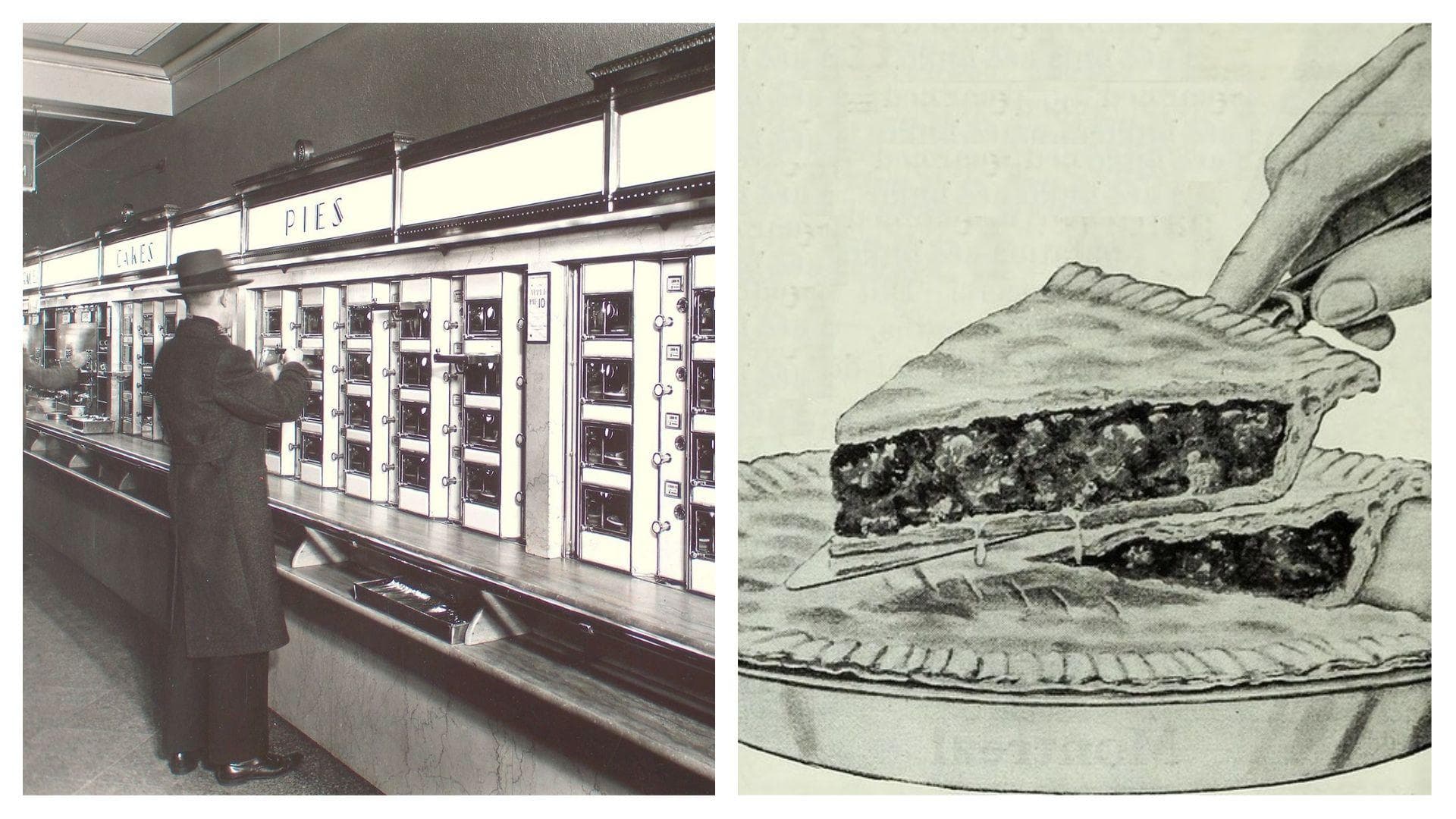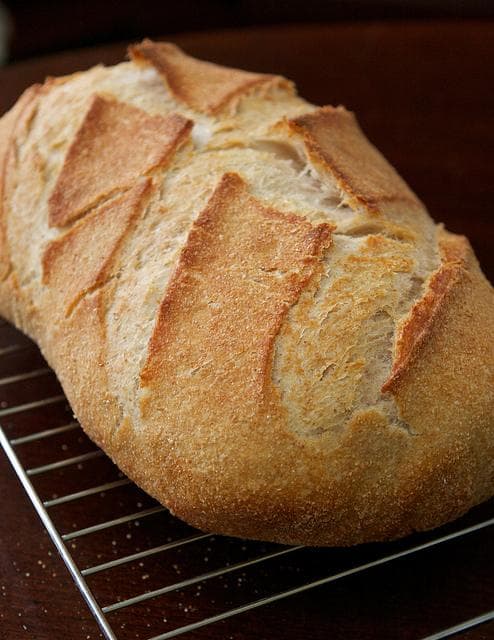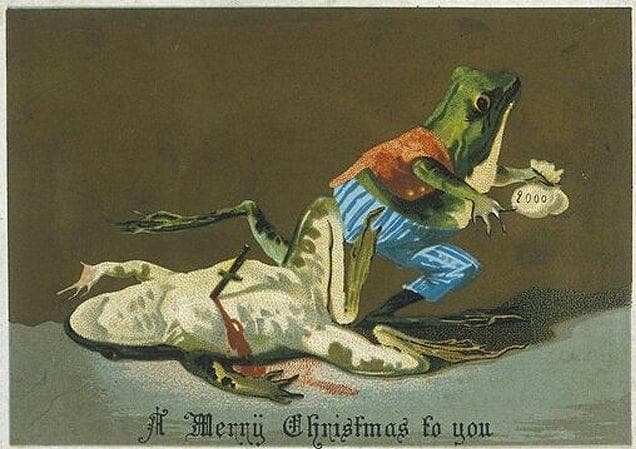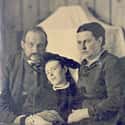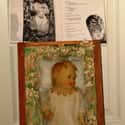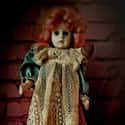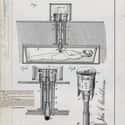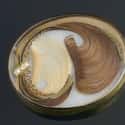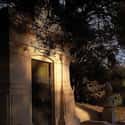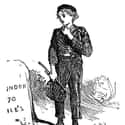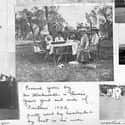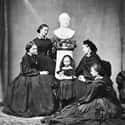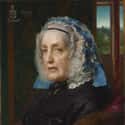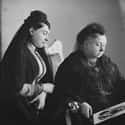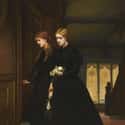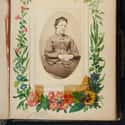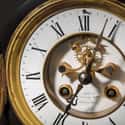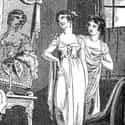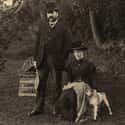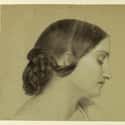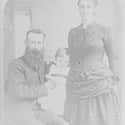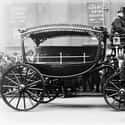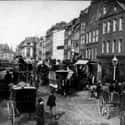-
(#1) Families Posed For Portraits With The Recently Deceased
The invention of the daguerreotype in 1839 by Louis-Jacques-Mandé Daguerre gave rise to post-mortem photographs. A common practice would be to pose the deceased in a realistic domestic setting. Adults were posed in a setting that reflected their profession as naturally as possible. Children were posed with family members, sometimes with a toy or sitting with a sibling, often times as though they were sleeping. The deceased were sometimes posed standing, with the aid of hidden clamps and stands. In rare cases, "open" eyes would be painted on top of closed eyelids.
Since photography was expensive, a post-life photo might be the only photo the family had of the deceased.
-
(#2) Grieving Parents Would Create Lifelike Doll Versions Of Their Deceased Infants
Following the passing of babies and young children, families would sometimes commission mourning or grave dolls. These were usually realistic wax effigies that would be dressed in the deceased child's clothing and sometimes even incorporate the deceased child's own hair. The dolls had soft cloth bodies filled with sand that had a lifelike weight and feel, and flat backs so that they would lie neatly in their coffins.
The dolls were usually left at the child's grave site, but some families would keep them in the home as a memento - in a small glass coffin, a frame, or even a crib.
-
(#3) Little Girls Would Practice Mourning With Funerary Dolls
During the Victorian era, women were tasked with the complicated business of mourning. According to the Encyclopedia of Children and Childhood in History and Society, it's not surprising that these macabre customs greatly influenced even children:
By the 1870s, death kits were available for dolls, complete with coffins and mourning clothes, as a means of helping to train girls for participating in, even guiding, death rituals and their attendant grief.
In addition, many books and pictures geared towards children emphasized the duties of families in times of grief.
-
(#4) The Fear Of Accidental Burial Created A Market For 'Safety Coffins'
Medicine was still operating in the gray area of experimentation during the Victorian era. And there were many stories of people being buried alive after falling into a vegetative-state, dubbed "sleeping sickness." The person would recover after several days, only to discover they were ensconced in their coffin. Understandably, there was the widespread fear of premature burial.
Several Victorian-era coffin designs addressed this fear. One included placing a bell in the deceased's hand, which was attached to a ring, and then running the line out of the coffin and up to the top of the grave. If the person were to come to, they could ring the bell to signify they were alive. Simple, right?
An American doctor, Dr. Timothy Clark Smith, was so terrified of being buried alive, he designed a 14x14 glass window that looked down a six-foot shaft into his coffin. Ironically, he passed on Halloween in 1893.
-
(#5) Mourners Made Jewelry Out Of Their Loved Ones' Hair
Memento mori (meaning "remember that you have to die") were personal mementos and symbols of the deceased such as masks, paintings, sculptures, and jewelry meant to remind the mourner of the deceased and of their own mortality. Hair of the deceased would be worked into shadow boxes, wreaths, corsages, fabrics, paintings, and jewelry to be worn by the mourner.
No mementos were to be worn during deep mourning (the first year), except for jet, a fossilized wood like coal with a deep, shining black color.
-
(#6) Graves Were Fortied Against 'Resurrection Men' Who Stole Bodies
The medical need to understand illness and death caused a high demand for cadavers for medical training and dissection (and to entertain the public that would gather to watch dissections). Because of this, grave robbing was rampant. With religious influence, family members feared that altering the physical body could have negative consequences for the spirit.
According to History's "The Rise of the Body Snatchers" article, the practice of disturbing graves was all too common:
A common trick of the trade was to burrow into the head end of the grave and drag the corpse out with a rope tied around its neck. A more subtle method was to dig a hole at a certain distance from the grave and tunnel the body out without anyone knowing the grave had been disturbed. The shroud and grave goods would often be left in the grave on removal of the body, as court sentences were lighter for body snatching alone.
The wealthy built mausoleums and vaults, or encased grave sites with iron fortresses, to keep grave snatchers (called "resurrection men") out. Those who couldn't afford such elaborate grave precautions "would place stones or flowers on the grave to detect any movement in the soil that might betray a theft, or dig branches and brambles into the grave to make tunneling more difficult." Sometimes the deceased's friends would even guard the grave at night.
-
(#7) Professional Mourners Were Hired To Amp Up The Grief At Services
Having the most austere and elaborate funerary services was not only a duty but an unspoken competition among prominent families in Victorian society. Professional mourners (or "mutes") were hired to trail behind the coffin or hover near and look especially forlorn. Dickens's fictional Oliver Twist was one such mute, hired to mourn at children's burial ceremonies.
Professional mourners provided a sense of solemnity to the affair, while also allowing the grieving family to keep up the stiff appearance the tradition required. Despite the great emphasis on grief in Victorian culture, it was still considered unseemly to publicly cry - particularly loudly - at services.
-
(#8) Victorians Enjoyed Picnics In Cemeteries
According to writer Kira Butler of The Midnight Society, the popularity of elaborate burial traditions affected the social perception of once-macabre settings. For a reprieve from the city, families in mourning turned to cemeteries to spend their quiet afternoons:
Designed like public parks, with their Gothic revival mausoleums and Egyptian-inspired colonnades, the cemeteries became a place to spend a Sunday afternoon where families might spread a blanket in a patch of shade, and socialize with others who'd come to visit with their loved ones at rest.
Of course, this wasn't merely because the Victorians were obsessed with post-life (even if they were). In an overcrowded, dingy city like London, cemeteries were clean, comfortable, wide open spaces filled with greenery, so it's easy to see their appeal as recreation areas.
-
(#9) People Might Wear Mourning Dress Most Of Their Lives
The wearing of dark colors (graduating from black to muted colors over time) to reflect a mourning period for a loved one could last up to four years for widows. However, a widow may opt to don black for the remainder of her life. There were also phases of mourning, in which the bereaved could begin to introduce some color back into their wardrobes during "half mourning." Yet the colors of grief affected all aspects of appearance, including caps, umbrellas, and even handkerchiefs.
However, due to the high mortality rates and the chance that one person might have multiple deceased relatives, a person might wear stark colors for most of their lives.
-
(#10) Families Started Saving For Funerals While Their Relatives Were Still Alive And Healthy
Previously, post-life services were arranged between the family and the church and were small private affairs. In the Victorian age, a burial ceremony was expected to be a long, elaborate, and public process - requiring a director, hired black horses for the hearse, elaborate floral displays, invitations, crêpe, pallbearers, professional mourners, photographs, and a large feast for mourners.
Families, particularly among the lower classes, began to set aside funds for an impending passing and the subsequently required pageantry. Many times the family might refuse to dip into the funerary fund for basic daily necessities, ironically causing the death of a family member. According to Join Me in the 1900s:
The stigma of a pauper's burial was so great that families would go without food and heating in order to put by a penny a week for each child, two for the mother and three for the father towards funeral expenses.
-
(#11) Family Watched Over The Dying, Friends Watched Over The Deceased
During the declining period, the family sat with beloved members until they passed. Then it was customary for friends who were not members of the family to sit beside the deceased in order to spare the immediate family that added grief.
Of course, this vigil also came in handy in case the deceased wasn't actually gone.
-
(#12) Black Crêpe On The Doorknob Signaled Visitors To Enter Quietly
Black crêpe, a kind of expensive silk known as the fabric of mourning, was tied to doorknobs to let people know that the Dark Angel had taken something precious from the household and a knock or ringing doorbell would be a jarring reminder of life. Many times, the front door was left ajar so mourners could enter quietly.
White crêpe was used if the deceased person was young or unmarried, signifying an additional loss of innocence.
-
(#13) Photos Of The Grieving Became Staple Photo Album Contents
It was very important for mourners to be photographed in their deep state of grief. Photographs of the grieving, funerary flowers, the deceased, and other elements were placed in photo albums as a remembrance, as one would do with wedding albums. And due to the new affordability of memorial portraits, even the poor could commemorate their loved ones. According to Jane Welsh Carlyle, a Scottish essayist:
Blessed be the inventor of photography! I set him above even the inventor of chloroform! It has given more positive pleasure to poor suffering humanity than anything else that has cast up in my time or is like to - this art by which even the poor can possess themselves of tolerable likenesses of their absent dear ones.
-
(#14) Clocks Were Stopped To Mark The Time Of Death
The strict rules for the mourning process called for the stopping of the clocks at the time of the passing to honor the moment the soul left this mortal coil. In doing so, the Victorians believed they were averting bad luck. Additionally, they believed this custom allowed the deceased to continue on to the next phase.
If the clocks were not stopped, then time would continue, thus allowing the spirits to remain in the present to haunt or endless roam in-between states of existence. After the deceased was laid to rest in the ground, then the clock could be uncovered and restarted. However, if the head of the house passed, the clock would never tick again.
-
(#15) Mirrors Were Covered To Prevent Those Passed From Being Trapped
There was a widely held superstition that mirrors could trap the deceased person, so all the mirrors in the house would be covered in black cloth. Some also argued this helped prevent vanity among the bereaved living in the house. Essentially, the focus would be completely on those who passed and not those who were still living.
Often, family photos and paintings would also be turned upside or turned to face the wall.
-
(#16) The Body Was Taken Out Feet First To Prevent It From Calling Out To Others
Just like the color black, Victorians were also enshrouded in bizarre and superstitious customs. One such tradition even dictated how the deceased was to be removed from the residence. The body was always taken out of the house feet first.
It was believed that if carried out head first, the deceased could see where the house was and return to haunt it. Additionally, the spirit that has not yet been laid to rest would be able to beckon other spirits or lure the living to their own demises.
-
(#17) To Prevent The Spread Of Death, Dogs And Even Chickens Were Sometimes Put In Mourning
If several or all members of a single household passed, anyone entering the home was required to wear a black ribbon, including dogs and chickens. The ribbon was believed to prevent death from being spread outside the house.
In the event that a beloved family pet passed, people of the era also held elaborate ceremonies for the deceased animals, particularly dogs. Despite class and wealth, families conducted dog funerals in the honor of their lost canine friends.
-
(#18) Women Were Considered The Embodiment Of Grief
When a woman lost her husband, she was expected to mourn him for at least two years, wear the proper dress, isolate herself from society, and take on the countenance of grief at all times. First, Queen Victoria made the white wedding dress popular; then she defined grief with the perpetual black mourning dress.
She wore black and stark colors after Prince Albert's passing until her own 40 years later. All of Victorian society was expected to follow suit, making the bereaved widow the centerpiece of her husband's passing, much like a morbid bride.
-
(#19) Children Were Expected To Grieve A Deceased Parent For A Year
While parents had the freedom to mourn for a lost child as long as they desired to - which could be their entire lifetime - a child was expected to grieve a lost parent for nine months (deep mourning) and then three months (half mourning). The phases of deep and half mourning are similar to the widow, although the duration is half the expected time.
In the event of one's sibling passing, the brother or sister was expected to mourn for six months - three months deep mourning, three half mourning.
-
(#20) There Were Smaller White Hearses For Children
The Victorian funerary procession was usually guided by a black carriage, which black or white horses pulled. In the case of a child, a decorated yet small white carriage was used, pulled by white ponies, and mourners walked behind the hearse instead of riding in carriages. White horses were also employed when the deceased was unwed.
However, if the family were wealthy, a particularly elaborate procession would occur, utilizing more horses, accessories, and mourning staff. Procession accessories included dramatic velvet, an array of flowers, and a canopy of exotic plumage when applicable. The upper-class demonstrated their wealth by exhibiting rare ostrich feathers.
-
(#21) Families Joined Burial Clubs To Afford Burying Their Loved Ones
The Anatomy Act of 1832 was passed to provide cadavers to the scientific community in the most cruel way. A relative had seven days to arrange for a coffin and burial or the body of someone who passed in an asylum, workhouse, or prison would be donated to a teaching institution. Religious beliefs fanned the flames of the fear of not having a fully intact body, ready for the resurrection. Robert Louis Stevenson's 1884 short story "The Body Snatcher" didn't help matters, either.
Burial clubs were created to help families of the lower classes pay for services, much the same way modern insurance policies function. Member paid weekly fees to cover expenses, no matter how long the person had been a member, with fees being based on age and type of ceremony.
-
(#22) Those Who Couldn't Afford A Proper Burial Had To Turn To The Poor Union
By the mid-1850s, there were roughly 50,000 deaths a year in London. Townships were running out of room to bury the deceased, causing sanitation issues and health concerns. While large beautiful cemeteries were built to hold the wealthy deceased, the poor faced a grisly fate.
They relied upon the Poor Union to bury their loved one in a pauper's grave, without a headstone and with little to no ceremony.
New Random Displays Display All By Ranking
About This Tool
In the Victorian period, complicated mourning ceremonies became a traditional custom, so that society would humiliate those who did not follow the customs of tombs. Some of these rituals, such as meals after the funeral and surrounding the body of the deceased with flowers, are still practiced today. Victorians were not afraid to do something unusual mourning customs that disappeared after the end of the era.
In the Victorian era, it was very popular to commemorate the deceased. People would cut part of the deceased’s hair and make brooches, lockets, and garlands. There were even specialized craftsmen who made burial supplies on their behalf. The random tool lists 22 weird morbid death and customs.
Our data comes from Ranker, If you want to participate in the ranking of items displayed on this page, please click here.

